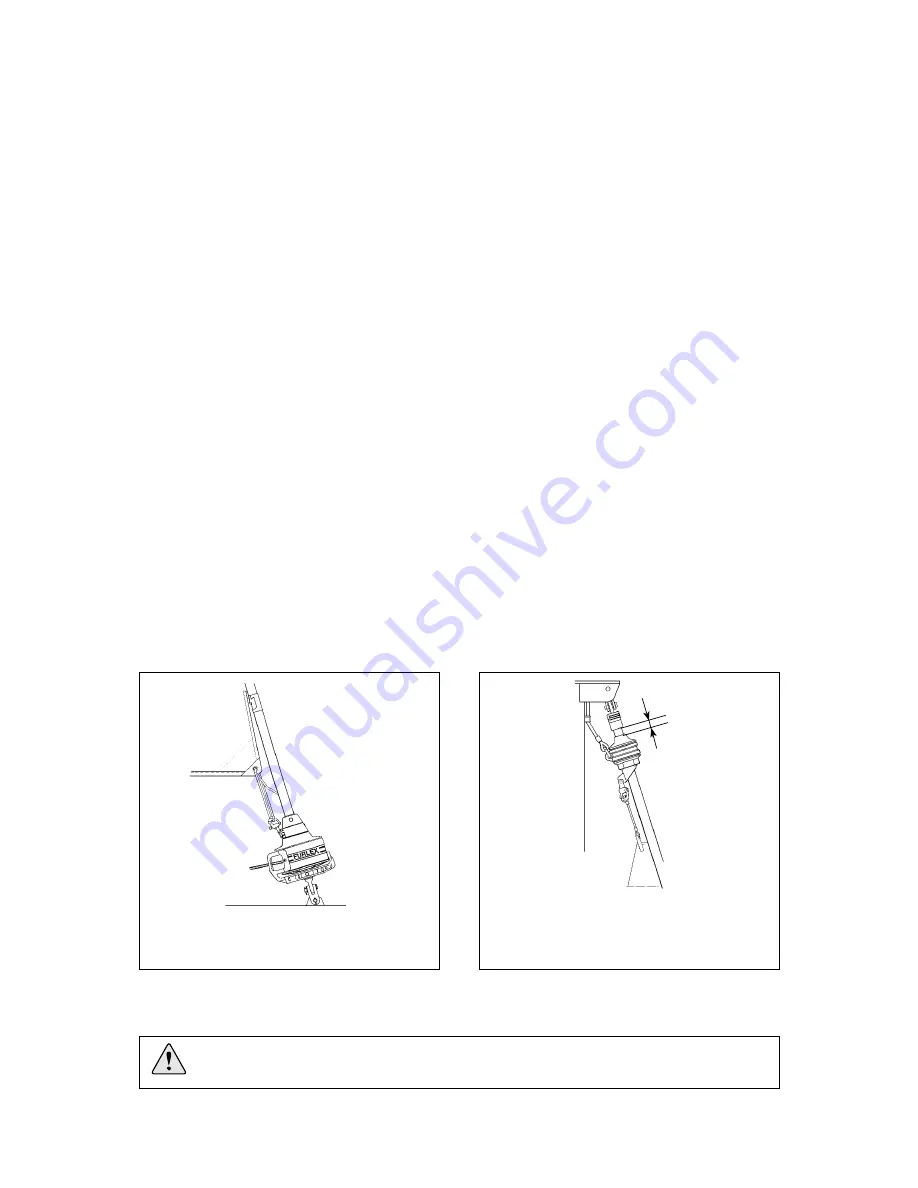
30
To hoist the sail see the description in chap. 11.1.
Attach the head of the sail directly to the halyard swivel.
1.
Tack the sail at deck level with a piece of rope between the sail tack and the tack snap shackle on
2.
the lower bearing assembly.
Hoist the sail (See chap. 11.1, ”To hoist the sail”). Adjust the rope length at the tack so that the
3.
halyard swivel attains its top position, i.e. the 5-10° requirement is satisfied, when the halyard is
fully tensioned.
There should never be less than 20 mm (3/4”) clearance between the top of the halyard swivel and
4.
the top guard when the sail is fully tensioned.
7. All the boat’s foresails must be adjusted to the correct luff length.
For the halyard routing to work properly, the halyard swivel must be in the correct
position to achieve the required angle of 5 - 10°.
Fig. 7.3.a
Fig. 7.3.b
min. 20 mm (3/4”)
Measure the length of the rope while the
halyard is still tensioned.
5.
6.
Attach a wire pendant corresponding to the
length of the rope directly to the head of the
sail by a talurit splice. This cannot then be
removed unintentionally, lost or exchanged.
Smaller foresails such a cruising (working) jib will have a higher clew, giving better visibility under
the sail, easier passage over the guard rail and less exposure to waves breaking over the foredeck in
heavy weather. This type of sail often requires less adjustment of the sheeting position when reefed
(See chap. 12,
Reefing
).
A furling genoa is usually a compromise between optimum performance and a more practical sail. The
sail is designed for both light and strong winds, and is cut with less draft, giving it a flatter shape when
reefed.
Several methods have been developed to improve the shape of a reefed sail. Many sailmakers use
”foam” as a filling material along the luff of the sail. The foam is tailored to match the sail cut, and
increases the diameter of the sail roll when reefing. A larger diameter of the sail roll gathers in more
sailcloth per turn and the draft is reduced by varying amounts along the luff extrusion.
Together with the ”free turn” (See chap. 12,
Reefing
) and the design of the Furlex luff extrusions, this
can give the best reefed sail shape.
7.3 Determining the length of the pendant
















































